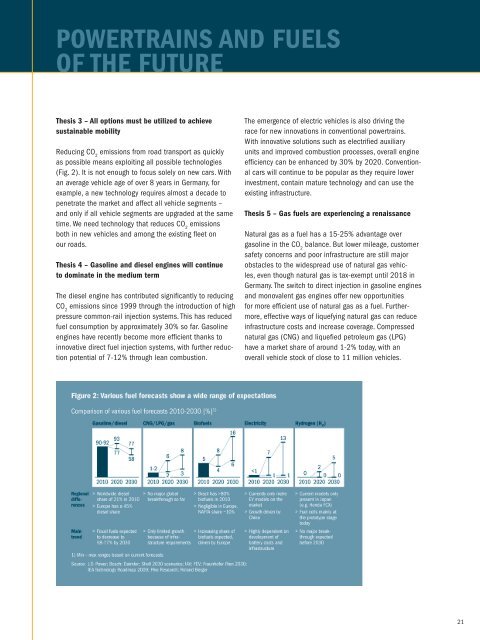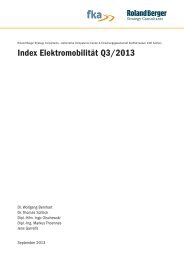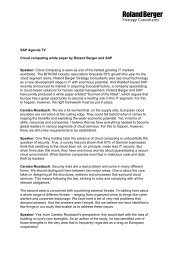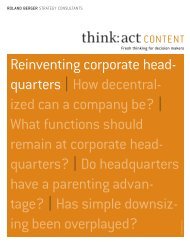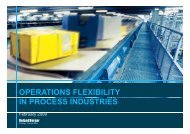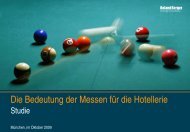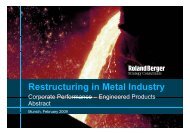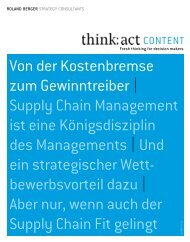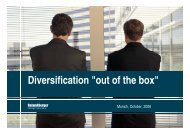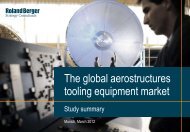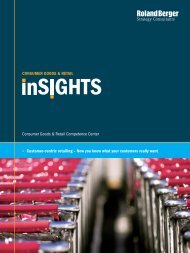"Automotive inSIGHTS 2/2010" (PDF, 3784 KB - Roland Berger
"Automotive inSIGHTS 2/2010" (PDF, 3784 KB - Roland Berger
"Automotive inSIGHTS 2/2010" (PDF, 3784 KB - Roland Berger
Create successful ePaper yourself
Turn your PDF publications into a flip-book with our unique Google optimized e-Paper software.
pOWERTRAINS AND FUELS<br />
OF THE FUTURE<br />
Thesis 3 – All options must be utilized to achieve<br />
sustainable mobility<br />
Reducing CO 2 emissions from road transport as quickly<br />
as possible means exploiting all possible technologies<br />
(Fig. 2). It is not enough to focus solely on new cars. With<br />
an average vehicle age of over 8 years in Germany, for<br />
example, a new technology requires almost a decade to<br />
penetrate the market and affect all vehicle segments –<br />
and only if all vehicle segments are upgraded at the same<br />
time. We need technology that reduces CO 2 emissions<br />
both in new vehicles and among the existing fleet on<br />
our roads.<br />
Thesis 4 – Gasoline and diesel engines will continue<br />
to dominate in the medium term<br />
The diesel engine has contributed significantly to reducing<br />
CO 2 emissions since 1999 through the introduction of high<br />
pressure common-rail injection systems. This has reduced<br />
fuel consumption by approximately 30% so far. Gasoline<br />
engines have recently become more efficient thanks to<br />
innovative direct fuel injection systems, with further reduction<br />
potential of 7-12% through lean combustion.<br />
The emergence of electric vehicles is also driving the<br />
race for new innovations in conventional powertrains.<br />
With innovative solutions such as electrified auxiliary<br />
units and improved combustion processes, overall engine<br />
efficiency can be enhanced by 30% by 2020. Conventional<br />
cars will continue to be popular as they require lower<br />
investment, contain mature technology and can use the<br />
existing infrastructure.<br />
Thesis 5 – Gas fuels are experiencing a renaissance<br />
Natural gas as a fuel has a 15-25% advantage over<br />
gasoline in the CO 2 balance. But lower mileage, customer<br />
safety concerns and poor infrastructure are still major<br />
obstacles to the widespread use of natural gas vehicles,<br />
even though natural gas is tax-exempt until 2018 in<br />
Germany. The switch to direct injection in gasoline engines<br />
and monovalent gas engines offer new opportunities<br />
for more efficient use of natural gas as a fuel. Furthermore,<br />
effective ways of liquefying natural gas can reduce<br />
infrastructure costs and increase coverage. Compressed<br />
natural gas (CNG) and liquefied petroleum gas (LPG)<br />
have a market share of around 1-2% today, with an<br />
overall vehicle stock of close to 11 million vehicles.<br />
21


